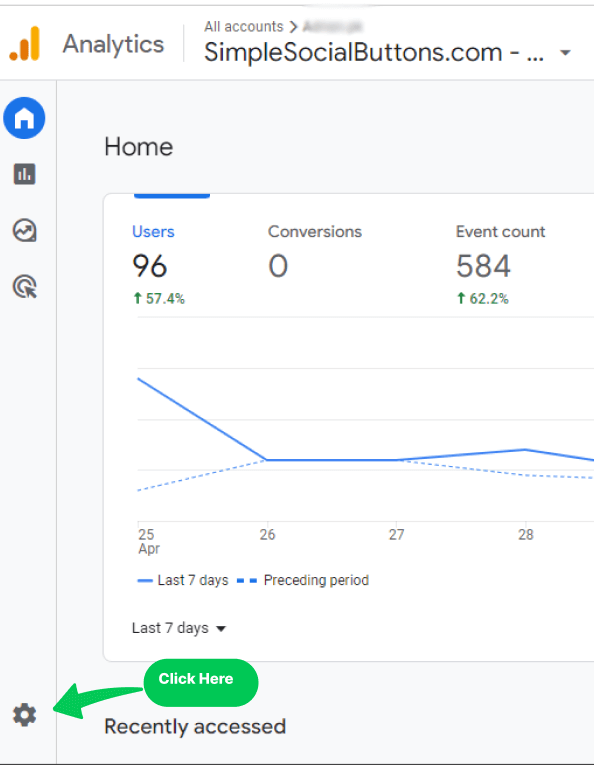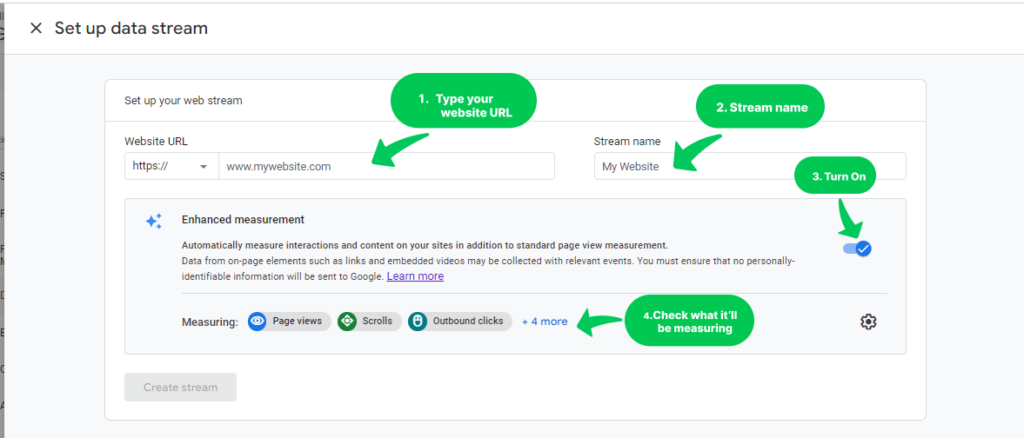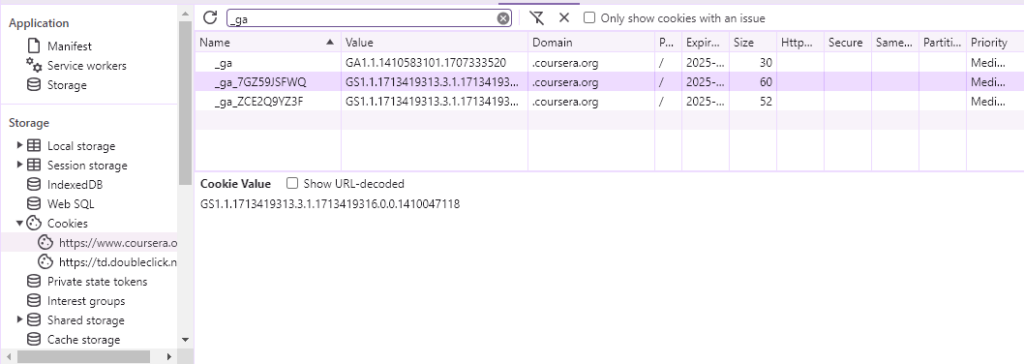GA4 Subdomain Tracking (EXPLAINED 2025)
If you’ve been using Google Analytics 4 (GA4) to monitor your website’s performance, you might be curious about how GA4 Subdomain Tracking works. Understanding this can give you some deep insights into how different sections of your website are performing.
First, let’s discuss what Google Analytics and Subdomains Tracking involves. It’s not just about monitoring your main site; it’s about digging deeper. By tracking subdomains in GA4, you can see if specific parts of your site, like your blog or shop, are attracting visitors or if there’s something they particularly enjoy there. It wasn’t always straightforward in previous versions of Google Analytics, but GA4 has made some significant improvements.
In this article, we’ll discuss why GA4 subdomain tracking is essential, how it differs from what you might be used to, and how you can set it up to get accurate, segmented information that could help you tailor your strategies to different audience segments.
Let’s get started!
Subdomain Tracking with Google Analytics 4 (TOC):
Understanding Subdomains in GA4
Before we discuss the details of setting up GA4 Subdomain Tracking, it’s necessary to understand what subdomains are.
Subdomains are like separate branches of your main website, designed to organize or highlight different sections or services. For example, you might have shop.yoursite.com for your online store and blog.yoursite.com for your latest articles. These are all part of your main site but exist under these distinct branches.
One common question that pops up is whether subdomains require cross-domain tracking in GA4. The answer is a bit nuanced. Unlike previous Google Analytics setups, GA4 simplifies this by treating all the traffic under the same domain and its subdomains as a single entity by default. What this means is that with GA4, tracking across your main domain and any subdomains doesn’t need any special configuration for basic tracking—GA4 handles it pretty smoothly.
Understanding this can save you a lot of headaches and ensures that when you look at your data, you see a full picture of how your main site and its subdomains are performing without any gaps.
How to Set Up GA4 Subdomain Tracking
Setting up GA4 Subdomain Tracking isn’t as difficult as it might sound. Here’s a step-by-step guide to make sure you get it right the first time:
1. Preparation and Prerequisites
Before moving into the technical stuff, make sure your GA4 account is all set. You’ll need to ensure that your main domain is already tracking correctly.
This is your foundation, so it needs to be solid.
If you are a WordPress user, you can read our detailed guide on How To Add Google Analytics 4 to WordPress.
2. Configuring GA4 for Subdomain Tracking
- Access the Admin Settings: Start by logging into your GA4 dashboard and navigating to the Admin settings.
- Create a New Data Stream: If you haven’t already set up a data stream for your subdomains, now’s the time. Go to Data Streams under the property column and add your subdomains here.
- Setup Data Stream for your Subdomain: To set up the data stream, type the name of your subdomain, give it a name, and click on Create Stream.
Once you create a stream, you’ll need to add Google Tags for proper tagging.
3. Install Google Analytics Tracking Code:
- Using Analytify: For WordPress users, it’s a smooth procedure that requires only a few clicks using Analytify, the best WordPress plugin.
- Using Google Tag Manager: This is an excellent tool for managing your tracking codes. Set up a new tag for each subdomain within Google Tag Manager to streamline your tracking setup.
You can also add tracking tags manually.
4. Verifying Subdomain Tracking in GA4
First, ensure that all subdomains (like blog.example.com and shop.example.com) are using the same GA4 property by installing the same tracking code (with the same “G—” Measurement ID) across all these subdomains. This setup is crucial for tracking user interactions seamlessly across your site’s different parts.
Check Cookie Settings in Google Chrome
- Open Developer Tools:
- Launch Google Chrome.
- Click the three dots at the top right corner to open the menu.
- Navigate to More Tools>> Developer Tools.
- Shortcut: Press Ctrl+Shift+I (Windows) or Cmd+Option+I (Mac).
- Inspect Cookies:
- In the Developer Tools, go to the Application tab.
- Click on Cookies in the left sidebar, then select your subdomain from the list.
- Use the search field to enter _ga. You should see cookies named _ga and _ga_[your measurement ID] (e.g., _ga_ABC1234567). Note that the “G-” from your GA4 Measurement ID is omitted in the cookie name.
- Verify Cookie Domain:
- Check that the domain for these cookies starts with a dot (e.g., .example.com).
- Check that the values of GA4 cookies should be the same between subdomains.
- This configuration allows the cookies to be accessed by all subdomains of example.com, enabling cross-subdomain tracking.
Real-Time Reports
Check the real-time reports in GA4 to see if the subdomain traffic is showing up. This is a great way to confirm that everything is working as expected.

- Troubleshooting: If things aren’t looking right, double-check your tag configurations and data stream settings. Sometimes, a small typo or configuration error can be the culprit!
5. Analyzing Subdomain Data in GA4
- Custom Reports: Once you know your subdomains are being tracked correctly, start exploring the data. GA4 allows you to create custom reports. Tailor these to focus on your subdomains so you can dig into specific metrics that matter most to you.
- Traffic and Engagement Metrics: Pay special attention to metrics like user engagement and traffic sources for each subdomain. This insight helps you understand which parts of your website are performing well and which need more attention.
By following these steps, you’ll have a setup for tracking all the activity across your website’s subdomains. This helps you better understand the user journey and make informed decisions based on comprehensive data.
Analytify – Subdomain Tracking for WordPress
If you’re running a WordPress site, integrating GA4 Subdomain Tracking can be streamlined with a plugin like Analytify. This plugin is designed to make Google Analytics setup straightforward for WordPress users, especially when it comes to handling subdomains.
We Make GA4 Subdomain Tracking Easy!
You know all about Google Analytics and love the keyword data it provides, but wouldn’t it be nice if there is a tool to manage all of that complex information within your WordPress dashboard?
Here’s how you can use Analytify for subdomain tracking on your WordPress site:
- Easy Installation and Setup: First, install and activate Analytify, the best Google Analytics plugin. The setup wizard will guide you through connecting your Google Analytics account, including your GA4 property.
- Automatic Subdomain Tracking: Once Analytify is connected to your GA4 property, it automatically tracks all the subdomains without requiring manual configuration for each subdomain. This is a huge time-saver and ensures that no data slips through the cracks.
- User-Friendly Dashboard: Analytify presents the analytics data right within your WordPress dashboard, making it easy to access and understand. You can quickly see how your subdomains are performing in terms of traffic, user behavior, and other key metrics.
- Enhanced Data Insights: The plugin provides detailed insights and breakdowns of analytics data.
- Using Analytify can significantly simplify the process of Google Analytics subdomain tracking for WordPress sites, allowing you to focus more on analyzing data and less on the technical setup. It’s a great way to ensure that your GA4 Subdomain Tracking is as efficient and effective as possible.
GA4 Subdomain Tracking FAQs
How to track subdomain in GA4?
To track subdomains in GA4, you need to set up a data stream for each subdomain in your GA4 property. It involves adding your subdomain details to the data stream settings and ensuring the correct GA4 configuration tag is deployed across each subdomain using Google Tag Manager or your site’s HTML.
Do Google Analytics subdomains require separate GA properties?
No, GA4 simplifies this process. You don’t need separate GA properties for each subdomain. A single GA4 property can handle tracking for your main domain and any subdomains as long as they are correctly set up under the same property.
Can I see subdomain traffic in GA4 in real time?
Yes, GA4 provides real-time reporting that includes subdomain traffic. You can monitor the activity on your subdomains as it happens, which is great for testing and seeing the immediate effects of changes or campaigns.
How does subdomain tracking impact the overall data in GA4?
Tracking subdomains allows you to segment and analyze data more precisely. It helps you better understand specific areas of your site, such as which subdomains are attracting more traffic or generating more conversions. This detailed view can inform your marketing strategies and website management practices.
What are the best practices for Google Analytics subdomain tracking?
The best practices for subdomain tracking include ensuring consistent tagging across all subdomains, using a single GA4 property for both the main domain and subdomains, regularly checking your data streams for accuracy, and customizing your GA4 reports to isolate and analyze subdomain data effectively.
What common mistakes should I avoid when setting up subdomain tracking in GA4?
One common mistake is not verifying the tracking code on each subdomain, which can lead to incomplete data. Another mistake is inconsistent configuration across subdomains, such as differing tag settings or parameters, which can skew data accuracy. Always ensure that your setup is uniform and thoroughly tested.
How can I differentiate between traffic from different subdomains in GA4 reports?
In GA4, you can differentiate traffic by creating custom segments or by viewing the full page URL in your reports, which includes the subdomain. Additionally, setting up separate views or filters specifically for each subdomain can help you monitor their performances distinctly within the same GA4 property.
Can subdomain tracking in GA4 help in understanding cross-domain user behavior?
Absolutely! While primarily for subdomains, GA4‘s tracking capabilities can be extended to analyze cross-domain user paths if your site spans multiple domains. It provides a more comprehensive view of how users interact with your digital properties, helping plan integrated marketing strategies.
Conclusion
We covered quite a bit of GA4 subdomain tracking! From setting it up to using tools like Analytify for WordPress sites, you have a solid foundation to get deeper into your website’s data. Remember, understanding how different parts of your site perform individually can give you powerful insights into user behavior and help you tailor your content and strategies more effectively.
Subdomain tracking in GA4 isn’t just about collecting more data; it’s about making that data work for you. By segmenting your traffic, you can pinpoint exactly what’s working and what needs improvement. This level of analysis can lead to more informed decisions and, ultimately, a more successful online presence.
You may also like to read GA4 Custom Events Not Showing Up (FIXED).
We hope this guide helped you understand GA4 Subdomain Tracking.
If you have any questions, or if there’s another topic you’re curious about, don’t hesitate to reach out or leave a comment below.











